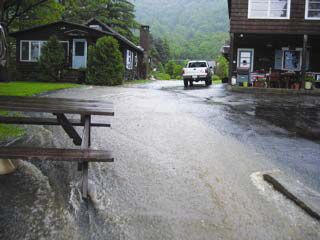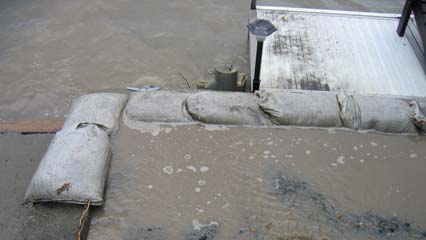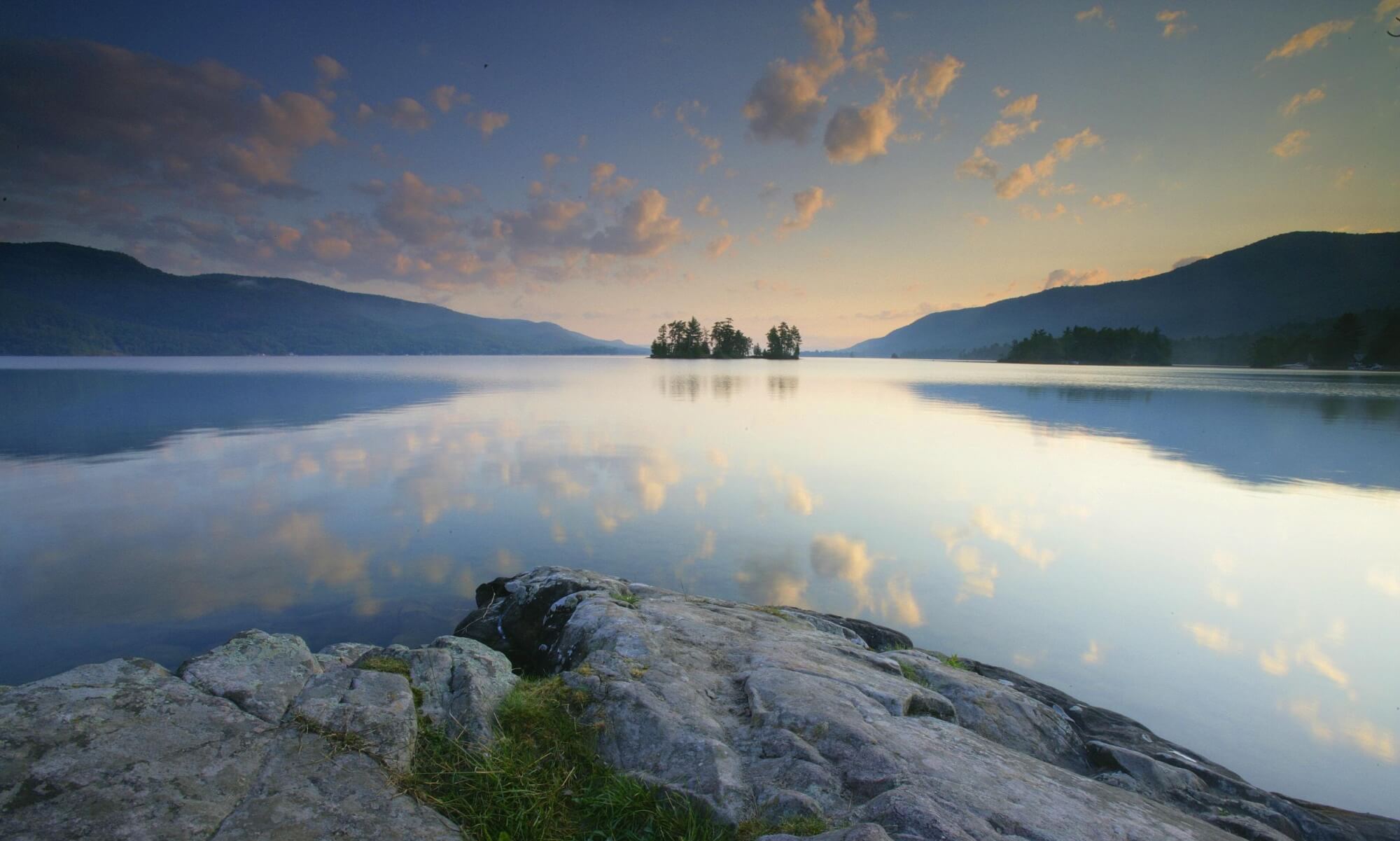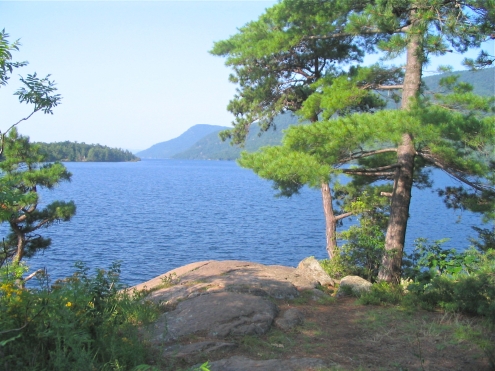 A driveway in Putnam carries stormwater runoff, laden with sediment, into Lake George. The Lake George Association plans to complete a major storm-water remediation project this summer to address the problem.
A driveway in Putnam carries stormwater runoff, laden with sediment, into Lake George. The Lake George Association plans to complete a major storm-water remediation project this summer to address the problem.
A $21,000 LGA stormwater project on Black Point Road in the town of Putnam will start this summer with funding support from the Lake Champlain Basin Program (LCBP). Survey and design work will begin in May, and final construction is slated for completion this August. The Lake George Association, Warren County Soil and Water Conservation District (WCSWCD), and the town of Putnam are partners in the
project.
When completed, the project will intercept stormwater runoff from a 37-acre watershed in the town. Currently, large volumes of untreated stormwater are washing down a hill and into a homeowner’s driveway, creating a temporary stream that flows directly into Lake George. A large plume of sediment is created after every storm. A concrete precast trench drain will capture and direct sediment-laden runoff into a dry well. The runoff will then overflow into a rain garden, where nutrients and phosphorus will be removed, before entering a small stream and flowing to Lake George.
The project is located on private property, just outside the right-of-way for the town of Putnam’s Department of Public Works. An option to move the project within the right-of-way was considered, but would have required doubling the size of the trench drain and removing trees at the end of the driveway.
 After storms, a large plume of sediment is created in Lake George, at the end of a driveway in Putnam.
After storms, a large plume of sediment is created in Lake George, at the end of a driveway in Putnam.
“This project will be a great benefit to Lake George, as it will treat a large volume of previously untreated stormwater,” said LGA Project Manager Randy Rath. “This new project will accomplish two important objectives: the trench and dry well will reduce non-point source pollution, and the remaining overflow will spread out into a grassy area and rain garden, removing any phosphorus or nutrients attached to the sediment,” he said. These watershed objectives were cited by the LCBP in their online document: Opportunities for Action in the Champlain Basin.
Lake George is classified by the New York State Department of Environmental Conservation (NYS DEC) as an “AA Special” waterbody, which means it is a source for drinking water. Lake George is also listed as a sediment Impaired waterbody on the NYS DEC’s List of Impaired Waters.
This project will be similar to many others completed by the LGA. LGA Project Manager Randy Rath, will manage the grant and overall project. The LGA will apply for all permits and address any regulatory issues. Rath will work with WCSWCD, the town of Putnam and the property owners to oversee and implement the project. LGA Director of Education Emily DeBolt will select native plants for the rain garden. LGA Staff will install the plants. “We call upon the expertise of an engineer or the WCSWCD for project oversight,” said Rath. “We want to ensure the project functions properly, according to its design, and follows best management practices for stormwater runoff construction,” he said.
Similar projects completed in the past include a joint project with WCSWCD and the town of Bolton: runoff coming down a dirt road and eroding a beach was captured. In that project, the dirt road was paved, and a trench drain was installed. The stormwater was directed into a dry well and underground chambers, where it could infiltrate into the soil prior to entering the Lake. Also, in 2011, the LGA installed a stormwater separator (AquaSwirl) along English Brook, with funding from the LCBP.






